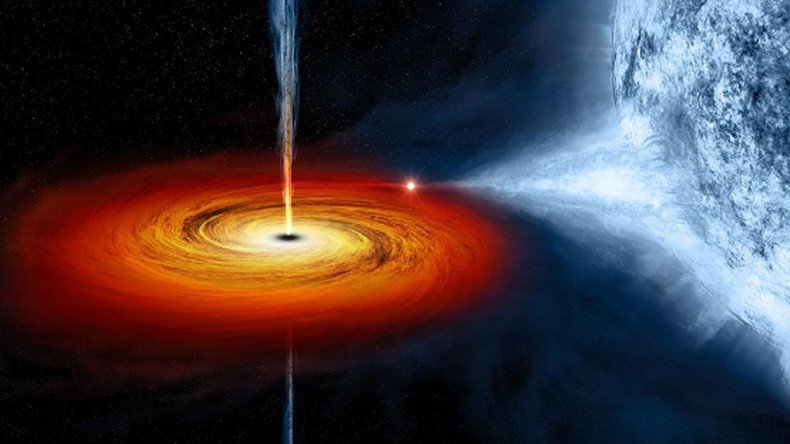Supermassive black hole weighs in at 660mn times mass of Sun

Scientists have made a significant breakthrough in understanding an enigmatic space phenomenon by successfully measuring the mass of a supermassive black hole.
The invisible massive objects predicted by Einstein’s theory of general relativity are shrouded in mystery and continue to baffle scientists as they struggle to gain a better understanding of their strong gravitational fields, which are capable of locking in light.
Black holes form after matter – often from an exploding star – implodes and condenses due to intolerably strong gravitational forces. Supermassive black holes grow by swallowing gas, nearby stars, and other black holes.
Scientists now hope they can shed new light on how both galaxies and their supermassive black holes form after measuring the mass of one hole, which is located at the center of galaxy NGC 1332, some 73 million light years from Earth.
READ MORE: Let them talk: Listen to gravitational waves make noise as black holes collide (VIDEO)
Scientists now hope they can shed new light on how both galaxies and their supermassive black holes form after measuring the mass of one hole, which is located at the center of galaxy NGC 1332, some 73 million light years from Earth.
The measurement, taken by the Atacama Large Millimeter/submillimeter Array (ALMA) in Chile, recorded its mass as 660 million times greater than the sun’s. It also picked up a cloud of gas circling the black hole at roughly 1.8 million kilometers per hour (1.1 million miles per hour).
ALMA Measures Mass of Black Hole with Extreme Precision https://t.co/6mzS4M1v7Opic.twitter.com/73c9JGF6VK
— ALMA Observatory (@almaobs) May 5, 2016
This is about 150 times the mass of the black hole at the center of the Milky Way, which contains 4.3 million solar masses – a relative small fry considering the largest black holes known to exist can have solar masses billions of times greater.
ALMA is the world’s largest astronomical project – a telescope with 66 radio antennas sitting about 16,400 feet above sea level.
In order to determine the mass of a black hole, it is necessary to measure the strength of its gravitational pull on the stars and clouds of gas that swirl around it.
A black hole's pull of gravity is so strong, no light escapes: https://t.co/LgUYfgonX6#BlackHoleFriday#BlackFridaypic.twitter.com/7pCvdDiNfJ
— NASA (@NASA) November 27, 2015
These latest observations provide one of the most accurate mass measurements for a black hole outside of our galaxy to date, according to the ALMA observatory.
READ MORE: Monster black hole in small galaxy group puzzles astronomers
The research published in Astrophysical Journal Letters was headed by Aaron Barth, an astronomer at the University of California, Irvine, whose team measured the speed of carbon monoxide gas in orbit around the black hole at the center of galaxy NGC 1332.
“Measuring the mass of a black hole accurately is very challenging, even with the most powerful telescopes on Earth or in space,” Barth explained.
“ALMA has the revolutionary ability to observe disks of cold gas around supermassive black holes at small enough scales that we can clearly distinguish the black hole’s influence on the disk’s rotational speed.”












